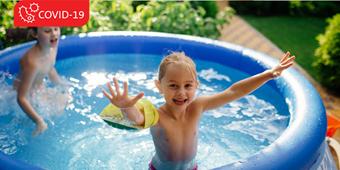Protect Your Family from Burns and Other Summer Hazards

Answer a few questions and we'll provide you with a list of primary care providers that best fit your needs.
The summer heat is on — and with it come potential dangers. Pouring an accelerant onto a fire pit or grill is one of many preventable summer hazards. An 11-year-old Ohio boy recently experienced severe burns from flames that flared when he used an accelerant on a fire pit.
To learn more about summer safety, Premier Health Now consulted with Matthew Stone, MD, a family physician with Middletown Family Practice, who offers advice on avoiding burns and taking other precautions this summer. On fire safety, he comments, “I think the biggest thing is what people are doing before they even start the fire. This includes using flammable liquids before starting a fire, placing fires too close to flammable objects and not taking steps to properly supervise a fire.”
He adds that it’s a good idea to keep a healthy distance between you and the flames when enjoying a fire pit. Closely monitor children around fires and think twice about letting them handle sparklers. With temperatures up to 1,200 degrees Fahrenheit, sparklers account for 25 percent of burns seen in emergency rooms. Consider glow sticks as a safer option.
For water safety, supervision around residential pools and other bodies of water is critical to reducing the nearly 400 children under age 14 who drown each year in the U.S.
When you’re out in the sun and heat, Dr. Stone says top priorities are to protect your skin and stay well hydrated to prevent heat exhaustion. He recommends applying 30 SPF sunscreen for protection against sunburn and long-term skin damage.
Dehydration can sneak up on you before you know you’re experiencing it, he says. “People who are experiencing a headache and not urinating much may already be on their way to heat exhaustion.”
He adds, “You have to plan on being hydrated before you even start your day. Most Americans already don’t drink enough water, so know how to measure your hydration status by monitoring your urine color. The darker the color, the more trouble you are in.”
Answer a few questions and we'll provide you with a list of primary care providers that best fit your needs.
Source: Residential Pool Safety Policy, American Academy of Family Physicians; National Fire Prevention Association; Matthew Stone, MD, Middletown Family Practice





